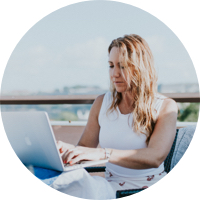
Teens are frequently compelled to conform to their peers' expectations. But what is peer pressure, and why is it a concern for parents? Peer pressure can have a forceful impact on kids. It can shape their attitudes and behavior in ways that aren't always positive. Peer pressure can also manifest in many ways.
For instance, cyberbullying is a growing issue affecting many kids today. In 2021, nearly a quarter of all US teens aged 13-17 are victims of cyberbullying. It's an alarming statistic that highlights an example of negative peer pressure. This article will define peer pressure and how it can affect your child. You'll also learn tips to help your child avoid negative outcomes from peer pressure.
Table of Content
Part 1. What Is Peer Pressure and Its Types
Peer pressure or social pressure is a b influence that can impact teenagers and young people in many ways. It's when someone wants to fit in with their peers by adopting similar behavior or attitudes. Peers are people of the same age, status, or social group, and they can include parents or teachers. The effects of peer pressure can be positive or negative, depending on each case.
Positive Peer Pressure:
Positive peer pressure is when peers encourage each other to do good things. It can make someone feel accepted and motivated.
Example: A group of friends encouraging each other to volunteer at a local animal shelter.

Negative Peer Pressure:
Negative peer pressure is when peers influence each other to do harmful things. It can cause negative emotions such as low self-esteem, anxiety, or depression.
Example: A group of friends pressuring someone to skip school or take drugs.
While peer pressure is often associated with negative influence, it can also have positive effects. But giving in to peer pressure doesn't necessarily mean a person will fit in. Continue reading to discover some examples of peer pressure that children may face.
Types and Examples of Peer Pressure:
Identifying the various forms of peer pressure is crucial in guiding your children.
Spoken Peer Pressure
The pressure increases with the number of people explicitly persuading them. For instance, a group of kids asking someone to do something can be challenging to resist.
Unspoken Peer Pressure
It's when children want to conform to what others are doing because they believe it is the standard. For example, kids may want to fit in by wearing specific brands or clothes.
Direct Peer Pressure
It combines both verbal and nonverbal cues to persuade others. Direct peer pressure can lead to on-the-spot decisions, like trying drugs to fit in.
Indirect Peer Pressure
Children sometimes want to follow the crowd and act like their peers, even without direct persuasion. The atmosphere around them can play a significant role in shaping their behavior, leading them to feel pressured to conform. For instance, feeling peer pressured to drink alcohol even if they don't want to.

Part 2. Indications Your Child Is Facing Peer Pressure
Peer pressure is not only a phase that you should take lightly. Abrupt shifts in mood, behavior, and style could be hints that your child is being peer pressured. Now that you know the definition of peer pressure, you should understand that these changes are not just a part of growing up. Stay alert and take action to prevent the harmful effects of peer pressure from affecting your child's life.
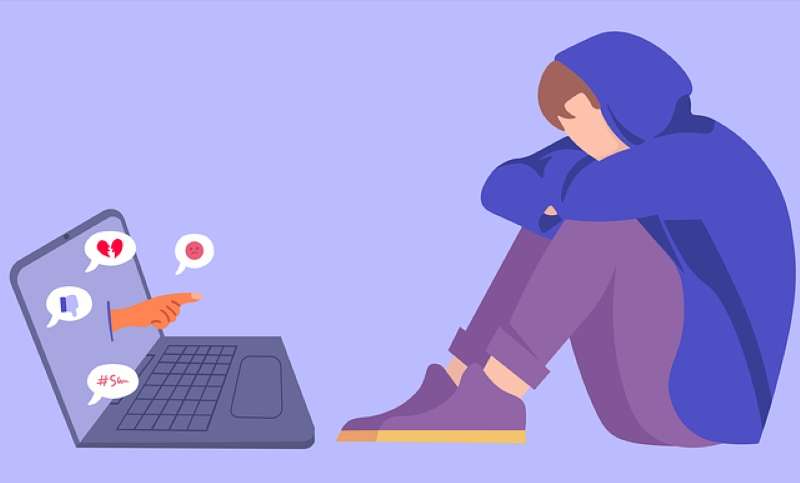
Here are some signs and symptoms to look out for that may show your child is experiencing peer pressure:
- Changes in behavior. A child may also start acting out of character or doing things they would never do before. It includes becoming more rebellious or aggressive. They may also begin engaging in risky behavior, like taking drugs or drinking alcohol.
- Changes in friends. Peer pressure can also cause children to change their social circle. They may start hanging out with a different group of friends, often ones who engage in negative behaviors or activities.
- Changes in hobbies and interests. It means they may start doing things they didn't like before because their peers are doing it. For example, your child may have loved basketball, but now they are into skateboarding.
- Changes in appearance. Your child may feel peer pressured to dress a certain way or to adopt a particular style. Your child changing their clothing style or wearing makeup might mean they want to belong to a specific group of friends.
- Changes in academic performance. Is your child's academic performance plummeting? It may be a warning sign that they are experiencing peer pressure. Take note if your child, who used to excel academically, is struggling. It may be due to the overwhelming need to fit in with their peers instead of focusing on their studies.
Discovering how peer pressure affects teenagers is crucial for parents and guardians. But it's not enough to know the problem; you should learn how to address it. Keep reading to learn how to deal with peer pressure and help your child make positive choices.
Part 3. How Wondershare FamiSafe Can Help Parents Monitor and Protect Their Children
As a parent, it's natural to want to trust your child and give them some independence. But it's crucial to be aware of the dangers of peer pressure, particularly when it comes online. Again, what is peer pressure? Peer pressure is the influence that friends and peers can have on your child's decisions and behavior.
Tracking a teen's online activity is challenging, but that's where Wondershare FamiSafe comes in. It is a parental control app that allows you to monitor your child's phone activity and detect any signs of negative peer pressure. FamiSafe helps your child make responsible choices and develop healthy habits.
With its Screen Viewer feature, you can capture kid's phone screens in real-tme or scheduled. Therefore, you can check what your children are doing with their phones and find suspicious appearences. Or you can use its Social App Detection feature, it supports monitoring up to 14 social media platforms, includes Messenger, Instagram, Facebook, Twitter, WhatsApp, YouTube, Kik, etc. Then, talk openly with your children about the peer pressure they face and guide them through it.
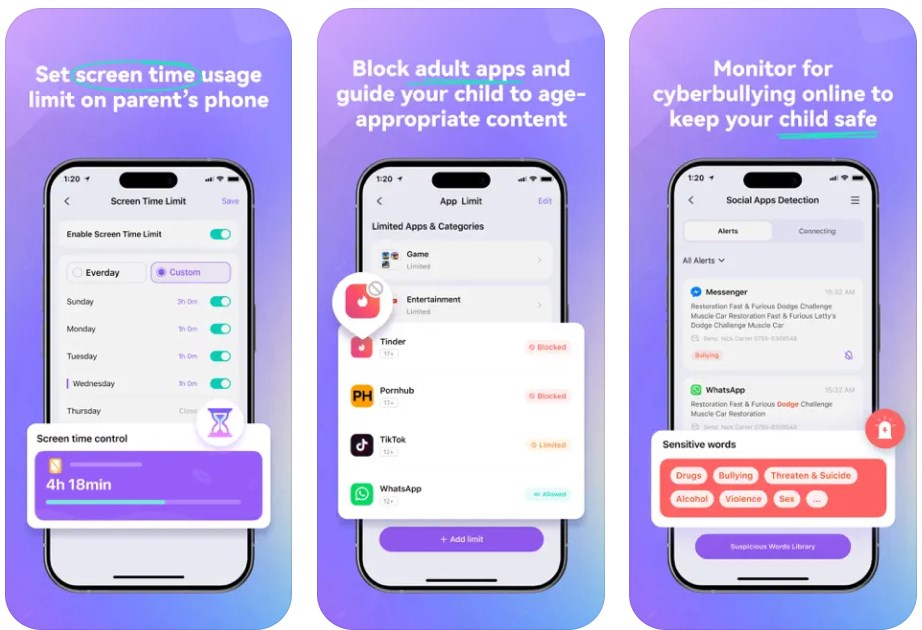
Available on: Windows, Mac OS, iOS, Android, Kindle Fire, and Chromebook
Pricing plan: Subscription starts at $9.99 per month. For more details, you can check FamiSafe's official website.
How Can FamiSafe Protect Your Teens From Peer Pressure?
Peer pressure can expose your child to offensive language or explicit content you may not want your child to see. FamiSafe's explicit content detection feature helps you protect your child from cyberbullying and other negative influences. Now, you can try these steps to use the Social App Detection feature.
Step 1: Download and launch peer pressure monitoring app on you and your kid's device. You need to register or log in to a Wondershare ID. Then follow the in-app instructions to pair FamiSafe Kids.

Step 2: Go to Feature and tap Explicit Content Detection.

Step 3: Click Connecting tab bar and toggle on the apps you want FamiSafe to watch. Then, tap Alerts to check the alerts triggered.
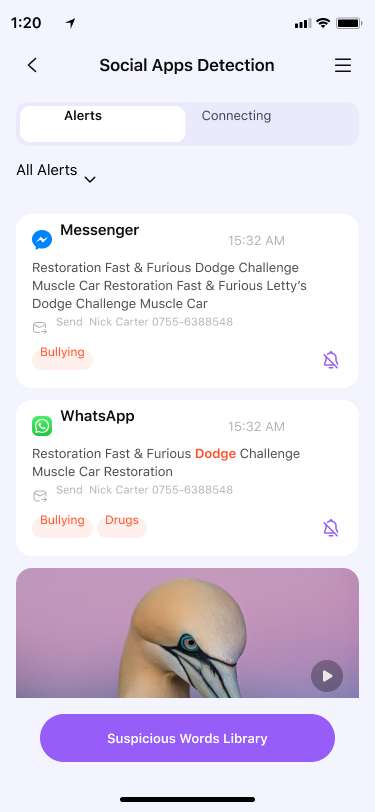

You can now check the alerts triggered by the keywords listed involving categories like alcohol, bullying, and drugs.
- Web Filter & SafeSearch
- Screen Time Limit & Schedule
- Location Tracking & Driving Report
- App Blocker & App Activity Tracker
- YouTube History Monitor & Video Blocker
- Social Media Texts & Porn Images Alerts
- Works on Mac, Windows, Android, iOS, Kindle Fire, Chromebook
Part 4. More Ways of Dealing With Peer Pressure
You may have been searching online for "what is peer pressure." Negative peer pressure is a common concern for parents, as it can often result in risky behaviors. Although positive peer pressure exists, it is not as usual. Beyond tracking their online behavior, here are more strategies to consider.
Set boundaries and rules for your child.
It can include having a curfew and monitoring their social media use. For instance, if they know they can't go to parties where drugs are present, they won't feel pressured to join in. Talk to your child about why these rules are in place and the consequences if they break them. This way, they will understand the importance of following the rules and the potential risks of not following them.
Encourage positive peer relationships.
Surrounding your child with positive influences can help them resist negative peer pressure. Your child needs to have friends who share their values and interests. Motivate your child to join groups where they can meet like-minded individuals.
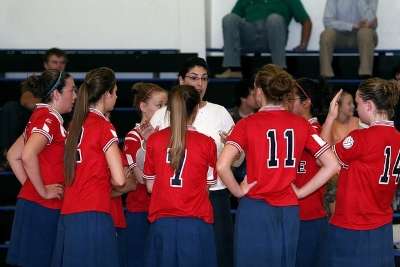
Empower your child to make their own decisions and think critically.
Teach them to weigh the pros and cons of different options and consider the potential outcomes. By doing so, they can develop b decision-making skills and learn to make choices based on their beliefs and values. This way, they can make an informed choice that aligns with their values and beliefs.
Inspire your child to think before they post.
Social media can be a breeding ground for negative peer pressure. Children may feel pressure to post certain content to fit in or gain popularity. Encourage your child to pause and think before sharing anything online. Discuss how their posts could impact their reputation, relationships, and future opportunities.
Conclusion
You may have found this article by looking up "What is peer pressure." Being aware of the signs of peer pressure can help parents protect their children and promote healthy decision-making. By now, you know how to deal with peer pressure and promote healthy decision-making. But, with the advent of technology, peer pressure can now extend into the online world.
One effective way to manage this is by using parental control apps like FamiSafe. It lets you detect your child's suspicious content and check their phone screens. Download FamiSafe today and start protecting your child's digital well-being.
